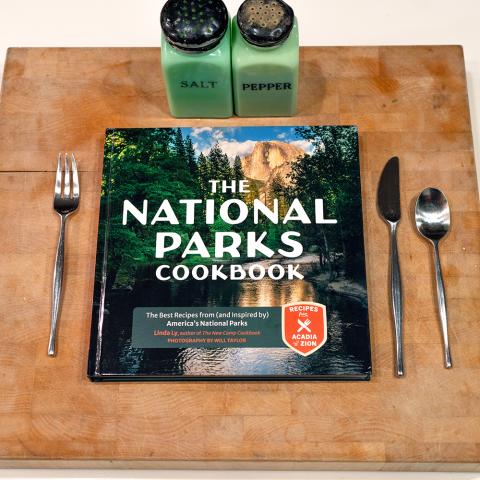
Death Valley holds the world record for highest temperature, 134 degrees, and its remote landscape can be deadly for the unprepared/Kurt Repanshek file photo
The high heat of Death Valley National Park is believed to have played a role in the death of a motorcyclist whose body was found in the southern end of the park.
According to park officials, visitors found the man's body Thursday on the unpaved Harry Wade Road in the extreme southern end of the park. Nearby, his motorcycle was parked upright. When park rangers arrived, "they made no effort to resuscitate him because the state of his body indicated he had been dead for an extended period of time," park spokeswoman Abby Wines wrote in a release Friday.
While the cause of death remains pending, Ms. Wines noted that the high temperature at Furnace Creek on Thursday was 118 degrees Fahrenheit.
“This makes me so sad," Death Valley Superintendent Mike Reynolds said in the release. "We think of national parks as wonderlands to explore . . . but sometimes people don’t consider risks enough. We don’t know what happened to him, but if he had been on Highway 190 or near Badwater. . . places that lots of people visit year-round. . . maybe we could have saved him.”
The park's notorious summertime heat -- Death Valley holds the world record for hottest official temperature, 134 degrees -- came close to claiming more lives earlier this month.
Ms. Wines said two French citizens were stranded on the unpaved West Side Road around 1:30 p.m. on Wednesday, June 1.
"A man and his mother were traveling when their passenger car became stuck in loose sand. No one knew their specific planned travel route and they were out of cell phone range in temperatures above 110°F," she wrote. "The two visitors walked about a mile to Badwater Road, then walked about another mile before they were picked up by a family visiting the park from Korea. After about an hour drive, they arrived at Furnace Creek Visitor Center and contacted park rangers. By this time, the older French woman was unconscious and exhibiting symptoms of extreme over-heating."
Superintendent Reynolds was one of the responding rangers.
“We were doing everything we could, but it takes a helicopter about an hour to get here. I didn’t know if she would survive, if she would get to the hospital in time," he recalled.
Fortunately, the woman survived and was released from the hospital after about a week.
Summer temperatures in the park routinely exceed 120°F. In spite of this, large numbers of people visit the park in summer, especially in July and August. Many of these people are from other countries, with limited English skills and little experience traveling in remote areas without cell phone coverage, park officials say.

The occupants of this plane managed to survive the crash/NPS
In another incident that could have proved fatal, a small airplane crashed while attempting to land on an extremely remote dirt airstrip in the national park last Sunday at 11:30 a.m. The Chicken Strip is approximately 1,400 feet long and 35 feet wide.
"The short landing strip has a reputation for being challenging—which is an attraction for some pilots. The plane ran off the end of the short runway, flipped over forward, and landed on its roof," Ms. Wines wrote in the release.
The Chicken Strip is in Saline Valley, a remote western section of Death Valley National Park, typically over a 4-hour drive from park headquarters at Furnace Creek. Saline Valley is a popular destination during cooler months, but on the day this accident occurred, only the park’s volunteer campground host and one camper were present.
"Fortunately, both people in the plane were able to get themselves out of the plane and were not injured," wrote Ms. Wines. "The pilot did not file a flight plan, which meant that if the campground host had not been present to witness the crash, it might have been a long time before the plane and its occupants were found. They had limited supplies and might not have survived long in the 111°F conditions that day."
Death Valley National Park recommends the following safety tips for summer travel:
* Plan ahead and prepare:
* Plan your travel route.
* Cell phone coverage is very limited in Death Valley National Park. Communicate your travel route to a friend or family member. Give them a specific time you will check back in with them and ask them to call 911 if you don’t return on time.
* Carry at least one gallon of water per person per day.
* Stay on paved roads.
*Make sure your vehicle and spare tire are in good condition.
If something goes wrong: Stay with your vehicle; don’t attempt to walk. You can use the vehicle for shade and you will be found more easily.




 Support Essential Coverage of Essential Places
Support Essential Coverage of Essential Places







Comments
No one who knows him will be surprised that Mike Reynolds, the park superintendent, was one of the responding rangers for the heat victim. He is one of the good ones.